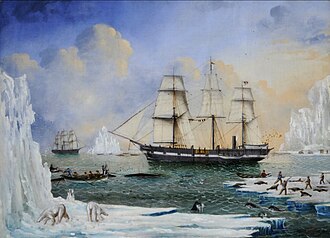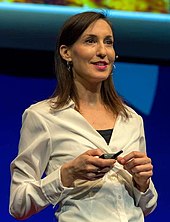Vegan studies
[24] Other works that influenced vegan studies include Nick Fiddes's Meat: A Natural Symbol (1991);[25] Colin Spencer's The Heretic's Feast (1996);[26] Tristram Stuart's The Bloodless Revolution (2006);[27] and Rod Preece's Sins of the Flesh: A History of Ethical Vegetarian Thought (2008), published by the University of British Columbia Press.
[28] In 2010 a United Nations Environment Programme report recommended a global move toward a vegan diet,[29] which over the following decade became increasingly mainstream in the Western world.
[30] According to University of Oxford English literature scholars Emelia Quinn and Benjamin Westwood, veganism's "entry into the academy" also began around 2010.
[33] In December 2013, Keele University media scholar Eva Giraud discussed the relationship of veganism to animal studies, ecofeminism and posthumanism.
[11][12] Wright describes vegan studies as a "lived and embodied ethic"[39] providing "a new lens for ecocritical textual analysis".
[40] Her work was prompted by research, for her doctoral dissertation, into J. M. Coetzee's Disgrace (1999) and The Lives of Animals (1999),[41] and was influenced by Adams's The Sexual Politics of Meat.
[49] Through a Vegan Studies Lens: Textual Ethics and Lived Activism (2019) was published by the University of Nevada Press and edited by Wright.
[40] She offers as an example of a vegan studies analysis a 2017 article by Caitlin E. Stobie in ISLE about The Vegetarian by Han Kang, winner of the 2016 Man Booker International Prize.
"[58] Rather than interpreting this as mental illness, Stobie views Yeong-hye's actions, according to Wright, as "a posthumanist performance of vegan praxis dependent upon inarticulable trauma and the desire for intersectional and interspecies connection".
[57] Another example is Sara Salih's account, in Quinn and Westwood's 2018 collection, of "three scenes of failed witness", including when Salih left a formal lunch in tears when the chicken dish arrived,[59] and when she and others stood staring (pointlessly, she felt at the time) at slaughterhouse workers using electric prods to push pigs off a lorry.
"[63] She suggests that the scale of suffering makes "[o]ur imaginations baulk"; it seems absurd to understand that "we are in the presence of the dead ... when faced with a scoopful of kibble".
"[65] The British art historian Jason Edwards offers a vegan studies analysis of Diana and Chase in the Arctic (c. 1857) by James H. Wheldon.
[70] The whales can probably hear each other struggling and dying, Edwards writes, but sound is "conspicuously absent from the eerily silent world of Wheldon's canvas".




